| Umělec magazine 2005/2 >> Moments in Museums | List of all editions. | ||||||||||||
|
|||||||||||||
Moments in MuseumsUmělec magazine 2005/201.02.2005 Solvej Helweg Ovesen | theory | en cs de |
|||||||||||||
|
”We lack a specific history and knowledge of how situations have been designed or lack design in museums; of how we can go about shifts in temporality. To focus on the performative dimension of an artwork evokes the question of how event and historicity are connected in a museum.”
There are some particular situations in museums – which, in retrospect, can be considered moments that are worth paying attention to in an article like this. In these moments something happened that carved through conventions and patterns of repetition that normally hide the passing and possibilities of time. I would like to point at a discussion of the performative dimension of a selection of artworks and projects which, mind you, differ in each case in terms of how the work relates to time, how it produces an effect as well as social relations. These are inquiries the museum or contemporary art center encounters to a very high degree presenting situational works that indeed challenge the notion of historicity connected to this kind of space. I continue with a discussion of various specific situations crafted by artists and cultural producers like Rirkrit Tiravanija, whose recent retrospective exhibition presented no artwork whatsoever; Tino Sehgal, who constantly challenges the conditions under which art is produced, perceived and distributed in his work; the CAC TV project at the Contemporary Art center in Vilnius, which is a performative and incorporating platform for artists on air, critical of TV as medium and the effects of reality programming; and finally, Julius Koller, who demarcates artistic territories and notions of inclusion and exclusion in his anti-performances. What characterizes these artistic endeavors is a curiosity concerning the performative side of how meaning is generated; the set of rules under which word and action/doing are linked and constitute reality in a specific work of art. These rules are not contested through symbolic art objects, but in the design of very particular situations in which time is one of the prime materials. The translation of the performative from the theoretical context of linguistics into the art context has come to imply a focus on what the artwork does, how it is staged and what kind of relation it creates with the viewer. The word itself, performative, originally comes from linguistics, defining an utterance that designates action and constitutes reality, in contrast to the constative, which reports. Both aspects are part and parcel of any artwork and utterance. Therefore it does not make sense to speak of a performative artwork, but one can speak of in which way an artwork utters and does something: ”To speak of a performative artwork is (therefore) tautological, because there is no such thing as a non-performative artwork. As every artistic ‘utterance’ has a form and content (even if the content lies in being meaningless), every artwork has a performative dimension: it gathers attention, generates effects, produces experiences and arranges bodies in space that make these experiences.” Co-thinking of museum and theatre Inter-subjective, non-interchangeable situations are presented in museums today. Artwork and event is not opposites anymore, but integrated aspects of a contemporary artwork, questioning or establishing relations between people, space and objects. Here Dorothea von Hantelmann makes a point that the way to constitute and make knowledge exhibitional through materialization in itself is a political issue. Every medium has certain production conditions - materially and symbolically - and way of entering the social. The social element in the presentation of art has increased importance here, because the production in situ and in actu of presentation is in focus, a live negotiation of meaning. Concerning the performative aspect of contemporary art, Hantelmann continues: ”It produces and reproduces the central categories that make up society: subjects and objects, as well as rules of behavior that set these into relationship with one another.” The point for her is to ask: ”What kind of discursive potential does the exhibition situation produce as a specific framework for the perception of art in an institutional space?” The answer suggested is the co-thinking of the museum and theatre, where the museum – inspired by theatre - reflects the projected identities in a more transparent way, and here: ”(...) theatre comes within the scope of visual arts. That is, as an art form that understands the gap between the artistic phenomenon and its reception to be a social place occurring here-and-now, creating a fundamentally heterogeneous space that rejects any one-dimensional categorization and, by so doing, allows us to reflect on the categorization system.” When a museum hosts an exhibition like Rirkrit Tiravanja’s, A Retrospective, or of Tino Sehgal’s, Journal # 6, it takes on some functions of the theatre and becomes a place where social power relations are mirrored, where reproduction and negotiation of society transpires. Most museums are still accustomed to knowledge and esthetic experience being transported through objects. As institutions, museums are set up to host visitors at certain hours of the day and still struggle with the former identity as mausoleum, (”a large burial chamber, usually above ground” or ”a monument of dead things”). Nevertheless, at least a handful of museums and contemporary art institutions are beginning to experiment and even sometimes master the moment. Rirkrit Tiravanija: A Retrospective… Recently I met a ghost. We had been guided around Rirkrit Tiravanija's exhibition, A Retrospective (Tomorrow is another fine Day), at the Boijmans Van Beuningen Museum in Rotterdam 2005. The tour, guided by a young girl enacting the artists’ instructions, began, ”We will follow a route through an exhibition where the possibilities have been contemplated and focused into actions of the mind…on view you will see no work, no object nor installation of objects frozen in time, fixed as if preserved for property. Rather you will see nothing.” However, this was not quite true, the guided tour created imaginary flash backs of Tiravanija’s performative cooking sessions and architectural interventions—moments consumed on the spot, where people had come and gone on in museums and galleries in Bangkok, New York, Berlin, Vienna, Paris... However, the ”punktum,” in Barthes’ terms, came when we almost left the museum. The group of the guided tour had dissolved and only few were left. There had been a guy walking around the exhibit while we listened to the guide, always leaving when we entered a new room, or remained when we left: not in sync. Going back into the exhibition space we found him, came close enough: ”This is how it goes,” he said, ”you first start experiencing a sense of well being. Then, you’re separated from your body. You travel through a dark tunnel, emerging from this darkness; you encounter a field of white radiant light. You enter this light. You see your entire life passing in front of you. You may encounter a presence, such as a deceased loved one. At this point, you may hear what you think is your body calling out, searching for you. Do not return to your body. I repeat: do not return to your body. That was the mistake I made (...) He paused, then continued: ”Where was I? Oh yes, I am dead and I am a ghost. I was a girl once. A world-champion gamer of first-person shooters and strategy games. I commanded armies (…). Ghosts come back in different forms and take different voices. It’s not that we can’t survive our representation; it is more that we just don’t want to go away. Ghosts suffer from lack of finality (…). When a ghost is up all night, rattling pictures on the wall, resetting the clocks, thumbing through books in the living room, shouting your name all night and turning lights on and off, some people call it dancing. I call it ghost choreography. We are operating systems that override the present. If the capital letter C designates any conscious process and C’ designates its underlying neutral activity, then C” designates me. If you allow me, I will take your brain to another dimension.” The Ghost wants to take us from thinking about space to the dimension of time, maybe a certain kind of amnesia in our present related to the REC technology: pointing out the failure of modernist architecture (”machines for living”) to offer possibilities for the inscription of our lives, characters, in space – physical, political and social. ”People have been concerned with finding their place in physical, political or social space for a long time. For example, all Velasquez’s paintings are concerned with spatial problems. Our problems are different now (…) We have a need to register ourselves in time (…) It’s hard to think about the present without thinking about the past because the past glows. In the good old days before cappuccino and sushi and ruccola went global. Before red peppers spiced up our salads. Before adventure became a sport, and nature a spot. In the good old days when the Paris metro smelled like cigarettes and lofts were reserved for the New-York elite. Before seat belts beeped when they weren’t fastened and spies really did come in from the cold. Before cell phone conversations were banned on trains. Before Googling became an aspect of human behavior. In the good old days when every second person was not a hero and every third was not a victim and every fourth not stressed. (…) So here I am. My story has been processed. I am now a character. We are walking through walls of solid air. You can hear things. Fictional frequencies. Psychoacoustic fictional spaces made of interludes and intros. Are you paying attention? Take notes. ” Ok, I took a few notes. After these reveries with a sitcom ghost, my first reaction was slightly paranoid, perhaps discovering the comfort that the emotional economy of retrospection had offered; or discovering the seductive effect of a soft conservatism. This last retrieval of ”the good old days” (which are 15 years ago) stood for me as an abstract parallel to the arousal of conservative sentiment affecting the post-industrial/Western world (and governments) today. With the many moments of shared space-times focussed on the consumption of food or time in Tiravanija’s work as a basic narrative of the exhibition, the new aspect was how the show projected the act of retrospection on the viewer – it did what it said. The product was in many ways the sentiments and reflections on the (rare) act of retrospection—as a tool to understand the amnesia of our present. The actions of the mind were merely moments of retrospection through the spoken word (by the way the Sitcom ghost must have been a poetry slammer in his former life). Tino Sehgal: Un-doing …How ideas perform themselves through society… The first piece I ever encountered by the German artist Tino Sehgal, whose education includes in economics, dance and visual art, was ”Untitled” from his imaginary ‘large museum of the Twentieth Century,’ where he performed an eclectic range of styles in modern dance. As if using a copy-paste and repeat function, Sehgal programs his body (memory) into the different registers of dance – recalling Cunningham, Ballets Russes and Yvonne Rainer amongst others. Everything at such pace that many moves were only recognizable the moment they were performed; then erased by the next subsequent style of dance. The setting was as minimal as could be: a naked dancer (Tino Sehgal) on a ”stage” defined by his movements in relation to hundreds of visitors sitting in a semicircle on the floor (”Performance night,” Revisiting History, Kunstwerke, Berlin 2002). While shifting from one ”stylized” body to another, Sehgal talked to the audience about what they might be seeing and thinking, reflecting on the power relation between viewers and ‘performing, speaking and thinking body on stage.’ Sehgal explains: ”I was only interested in Visual art in the sense that it deals with the relationship between humans and objects. But how could I do that in theatre? My idea was to make a piece that exhibited the medium dance, in order to point to the idea of production that is inherent in this medium. I wanted to make a piece that had no specific meaning in the sense of form and content, only exposing the medium. (…) So my idea was (instead) to do all the forms and contents available in the genre art/stage dance, hoping that they would cancel each other out in regards of their specific positions. (…)” In reply to the question of what the museum (mausoleum) offers Sehgal, he states: ”I would say the museum is about death, because it is about overcoming death; that it is about prolonging life, so it is double sided. Personally, I’m interested in proposing different notions of history, presence, eternity (…)”. Crucial to him is ”…how these ideas come into society and perform themselves through this society. They are there even though they are not there anymore.” In this work the artist reenacts what he later in the interview calls an ”ideology of doing.” In the last couple of years, Tino Sehgal has developed his praxis towards instructing other people to enact his pieces-actors, dancers, opera singers, children, and guards. In doing so, he has further distanced himself from the traditional institutionalized categories of art, making no objects, documentation, written instructions or contracts with collectors. Moreover, he doesn’t sign his works of art (in print on paper); and furthermore, by not performing them himself, he rejects the supposed authenticity created in performance art, relating the work of art to the artist ‘embodied-self’. The instructions are given purely ”body to body.” In a way, Sehgal merely integrates and reflects the existing communication system of the museum as a medium. However, it takes more than the consciousness of the museum system—and its information economy implemented by the neo-liberal market economy—to influence the museum as a medium. Tino Sehgal presented the exhibition Journal # 6 in the newly renovated and expanded Van Abbemuseum in Eindhoven, Holland. In the exhibition space where he presented his work, the collection was on display as usual. Having seen his works in other contexts; I was curious what Sehgal’s ”This is…” would point at in the museum. Entering the van Abbemuseum I missed all pieces by Sehgal to begin with - in my hasty pace (this time I wanted to dismiss the collection and go right to this show). No one of the guards seemed to react, however, and I passed an empty room in the collection, which I thought had to do with the new director taking over and works being installed. I noticed there was a guard in that space that wore great make up. From the next room, I heard a voice singing for a few seconds and went back, stood blank, aha, then left the room in slow motion. Yes. The guard was singing and this time, I could hear it: ”This is propaganda.” After a short breathe the guard announced, ”Tino Sehgal, This is propaganda, 2002, courtesy Jan Mot Gallery.” Only some rooms had guards. Passing an ”unattended” room with an unattended piece, I actually started looking at the exhibited works and forgot about the guards till I felt somebody moving behind me, turned to see a tall guard finishing large circular movements with his arms while jumping, he froze and said, ”Tino Sehgal. This is good, 2001. Courtesy the Artist.” Through the self-referential act of stating, ”this is good” this piece reflected the tautological power of conveying a judgment (– so often done in the art context). The first time I saw this piece it was performed by Dorothea von Hantelmann in a University lecture in Berlin. It worked in both contexts, only here at the Van Abbemuseum ”This is good” echoed a bit longer evoking all the primer judgments performed by curators putting together the collection in the museum: pointing out ideas and setting ”criteria” for which ones should make their way through society (like certain styles of Dance also have). In the oeuvre of Tino Sehgal: ”…speech, singing, movements, replace the necessity for the presence of things; which doesn’t mean that these things have disappeared but that they could just as well be absent.” CAC TV: A time-slot for imagining alternate realities Performativity, or, the performative, must not be seen as a new theory, but as a dynamic factor in all systems, potentially breaking them down and building them up—as humans employ speech acts, and actions as such do not just reproduce systems, but also perform them. Exhibitions, theatre plays, sport events, concerts, parties, TV programs, and lectures are cultural performances that function according to different sets of rules that participants enact. Focusing on the performative aspect of culture means a perception of the world as being in a constant process of becoming, of our-selves as co-producers of reality. It may come as a surprise that I am now going to introduce a TV program in this context of performative moments in art. However, the CACTV has a special background and premise, ”Every Episode is a Pilot. Every program is the last Episode.” It is a TV program about making a TV program, produced by artists and curators within the Contemporary Art Centre in Vilnius, Lithuania. The occasion of CACTV came about as CAC was invited by a commercial TV channel in Lithuania to contribute a weekly 30 min program. It is appropriate here to say that the CAC art institution has a collection of Fluxus art, which is very important for its identity and has experience in producing and representing art with a performative character. The CACTV as a new project of the CAC functions as a performative platform for temporary collaborations, which lends itself to artists and television enthusiasts, who desire to determine what is broadcast on television in Lithuania and abroad (programs can be viewed on the internet). ”A timeslot for imagining alternate realities” is actually the synopsis for this new TV program. With a changing cast of participants or characters for each episode, the curator and programmer, Raimundas Malasauskas, and the editor, Maria Bustnes, are the committed engines behind the program, which—mind you—they claim is not a TV program. The ambition from the beginning was to reset the premise (script, set of rules) for each 30 minutes. television production: ”Every program is a pilot. Every Program is the final Episode” (a good slogan cannot be repeated too often). The open TV log you find on the webpage expands on this idea: ”It is a TV program about making a TV program. Actually, it introduces the genre of reality meta-show both as a deconstruction of the format of reality (programming) and as an attempt to create one's own (reality) (programming) (reality-programming). It dreams of turning audience members and spectators into an active public, possibly even producers. It dreams of inducing wakefulness and tapping into the inherent power of the multitude to counter the sleep inducing nonsense that often passes as entertainment. Activating the creativity and critical skills of the viewer while still remaining watch-able.” CACTV points in the direction of a durational project in which a TV crew operating within the time frames and public relations of commercial TV – weekly programs, deadlines, large audience, participation and evaluation from another public than the museum visitors at CAC, for example. In a way un-doing the premise of traditional TV, while each new episode might offer a chance of inventing a new set of regulations or instructions for its production – since every program is the last episode. The episodes that have been broadcasted so far range from the first one ”Behind the Scenes” about making the first show, casting for the CACTV (here an ape from the local ZOO was invited especially, or was it only for the launch party?), to the second episode inviting a professional TV hostess in the studio to ”advise” on how to make a proper TV program, while studying her as a character produced by TV, to co-producing a program with kids about the likes of characters in computer games and TV shows. Julius Koller: Demarcation Along with such creators of moments that can be seen as de-territorializing (conventions, media, identities) in a verbal, timely and performative manner, there is the recent anti-performance of Slovak artist, Julius Koller, Demarcation, 2004. With his Demarcation, Koller has identified himself as ”U.F.O.naut” pointing at his outsider position as ”subjective-cultural actor,” who for 20 years developed a series of conceptual tools to stay independent as artist and as person in Czechoslovakia. He created his own anti-universe consisting of cultural situations and anti-happenings realized within ‘reality’ however with a fictive distance to the daily life of communism as well as post-socialism. These were only open to a small group of people then. Recently Julius Koller did one of his anti-performances, Demarcation, in Central Museum in Utrecht. The context was a group exhibition titled ”Cordially Invited,” in which one of the main concerns was to think about the concept of dynamic hospitality up against the notion of a ”cordial invitation” (static relation between host and guest) that the Old EU offered the New EU Countries in the year 2004. Inside the exhibition space, beneath 25 gray tone flags of the enlarged EU countries – a piece by Wilfredo Prieto García, ”Apolitical” – Koller, unannounced, started outlining the exhibition space, framing the opening crowd with a white chalk-line like the ones marking a soccer field. In an orange vest and with trained movements he handled the old school chalk-machine: shaking it, making sure the right amount of chalk came out and the line was even. After half an hour the work was done, Koller placed the chalk-machine in the corner (under the Slovak flag!!). A moment, where situations of inclusions and exclusions of the field cancel each other out simultaneously as people walk in and out of the marked area. So who in the end is on stage and when is it? The theatrical is a drive behind the production of culture. We live in a culture where people stage themselves and their lives: politicians, art groups, designers, corporate firms – as a competition of realities. Everywhere – in urban life, at home – there are different settings, scenes that insinuate rules of interaction as well as a certain lifestyle. These theatrical and performative tendencies of contemporary culture, it is necessary to exhibit or contest in the visual arts and other kinds of performances in order to objectify them. The performative aspects of contemporary art move the stages, change the roles, and de-territorialize routines, systems, identities, and spaces we know. If the existing museum or art institution wants to function as a medium that allows these unforeseeable moments to surface, it requests a prior respect of its own organism. It also requests a renewed knowledge about different forms of production and mediation, about how the object becomes a word or an action that just as well could be absent since it is there anyway.
01.02.2005
Recommended articles
|
|||||||||||||
|
04.02.2020 10:17
Letošní 50. ročník Art Basel přilákal celkem 93 000 návštěvníků a sběratelů z 80 zemí světa. 290 prémiových galerií představilo umělecká díla od počátku 20. století až po současnost. Hlavní sektor přehlídky, tradičně v prvním patře výstavního prostoru, představil 232 předních galerií z celého světa nabízející umění nejvyšší kvality. Veletrh ukázal vzestupný trend prodeje prostřednictvím galerií jak soukromým sbírkám, tak i institucím. Kromě hlavního veletrhu stály za návštěvu i ty přidružené: Volta, Liste a Photo Basel, k tomu doprovodné programy a výstavy v místních institucích, které kvalitou daleko přesahují hranice města tj. Kunsthalle Basel, Kunstmuseum, Tinguely muzeum nebo Fondation Beyeler.
|


















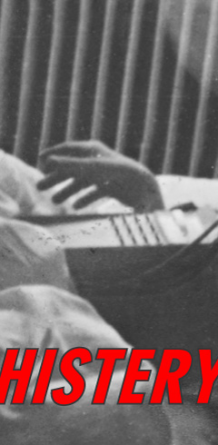






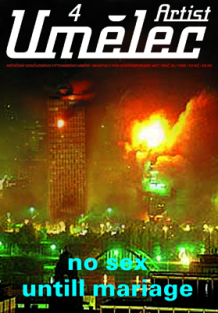




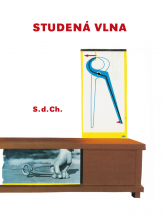
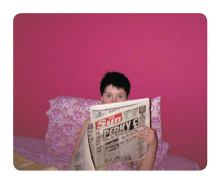
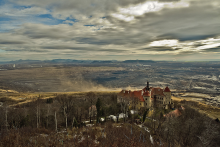
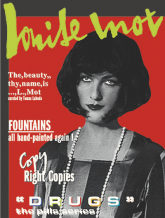


 We Are Rising National Gallery For You! Go to Kyjov by Krásná Lípa no.37.
We Are Rising National Gallery For You! Go to Kyjov by Krásná Lípa no.37.
Comments
There are currently no comments.Add new comment